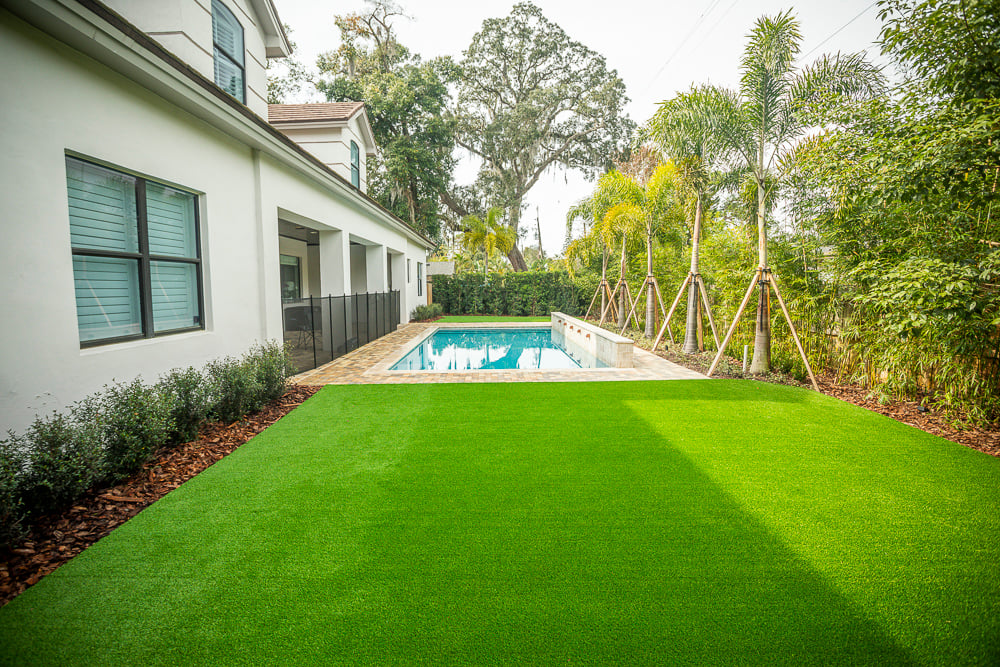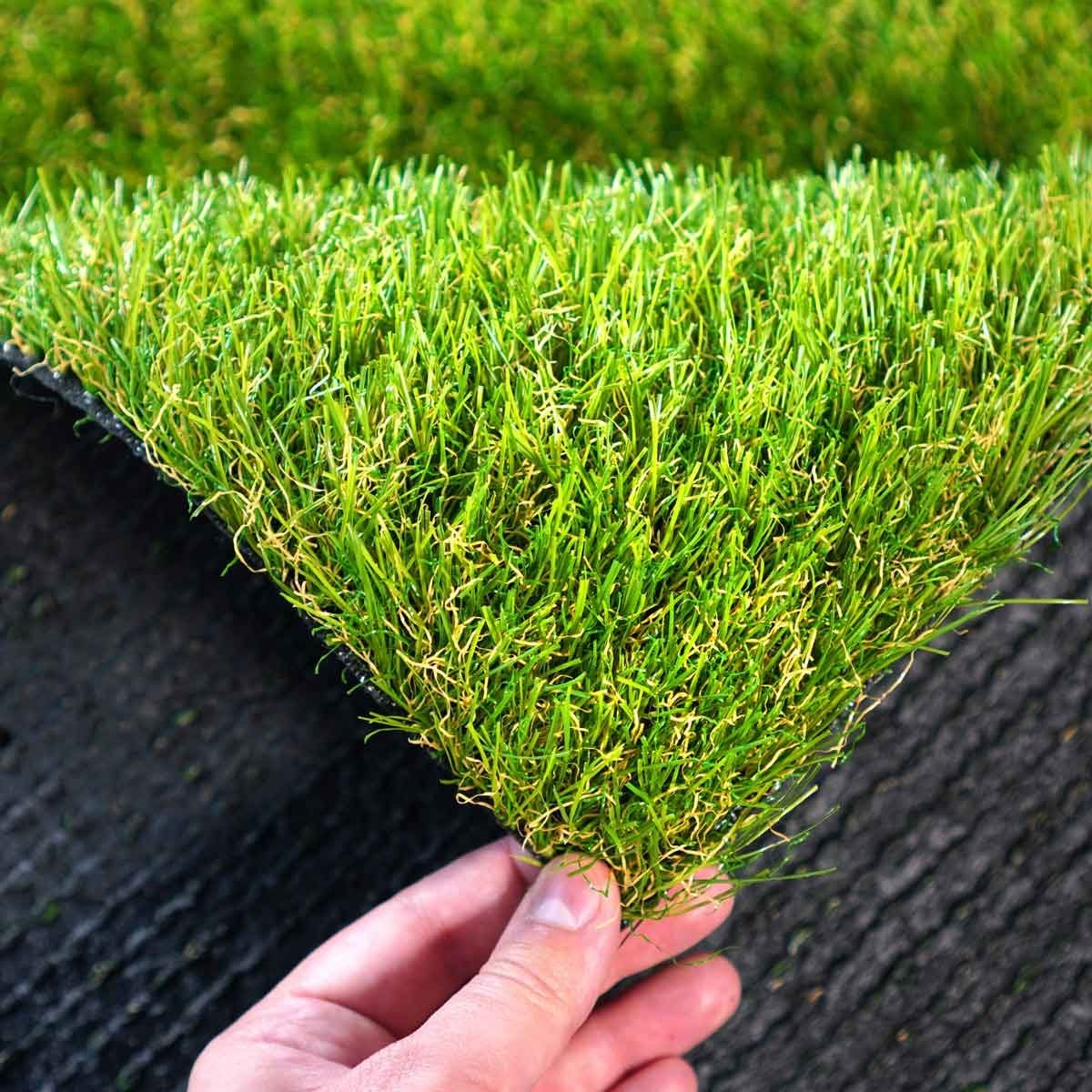Upgrade Your Outdoor Space with Arizona Artificial Turf for a Vibrant Green Look
Upgrade Your Outdoor Space with Arizona Artificial Turf for a Vibrant Green Look
Blog Article
Look Into the Environmental Advantages of Opting for Artificial Turf Solutions
The adoption of man-made lawn services presents a compelling chance to resolve pressing ecological challenges. By substantially lowering water use and minimizing the application of harmful chemicals, these options not just promote sustainable landscaping however also secure local ecosystems.
Water Conservation Perks
One of the most substantial benefits of artificial lawn is its capacity to save water. In comparison, man-made grass does not need watering, significantly minimizing the overall demand for water sources.
By getting rid of the requirement for routine watering, artificial turf contributes to lasting landscape methods and assists alleviate the ecological influence of extreme water intake. The conservation of water extends to the decrease of drainage, which can lead to dirt disintegration and river air pollution.
Furthermore, the setup of artificial lawn permits homeowners and communities to assign water resources much more efficiently, focusing on vital usages such as drinking water and farming. The shift towards synthetic grass not only advertises responsible water usage but additionally straightens with wider environmental objectives targeted at maintaining natural sources.
As communities progressively focus on sustainability, the water preservation benefits of fabricated grass provide a compelling instance for its fostering in household and industrial landscaping jobs.
Minimized Chemical Use
The transition to synthetic grass substantially decreases the dependence on chemical therapies typically used in natural turf maintenance. Standard lawn management normally entails the application of pesticides, fertilizers, and herbicides to advertise development and control parasites. These chemicals can present dangers to human wellness, neighborhood wild animals, and the setting, contributing to dirt and water contamination.
In comparison, fabricated grass gets rid of the requirement for these dangerous materials. By minimizing the release of artificial compounds right into the environment, man-made grass promotes much healthier soil and water systems.
In addition, the lack of chemical overflow related to fabricated lawn installments assists secure local waterways from air pollution, supporting aquatic life and preserving biodiversity. Arizona artificial turf. As communities significantly prioritize sustainable methods, choosing artificial turf offers a sensible remedy that lines up with ecological preservation goals. Through this change, property proprietors can take pleasure in rich environment-friendly areas without jeopardizing eco-friendly health, leading the method for a much more lasting future
Reduced Carbon Impact

Furthermore, the setup of fabricated lawn can lead to significant water preservation. Natural yards need significant amounts of water for watering, which not only includes to the carbon footprint associated with water extraction and therapy yet additionally strains local water sources. On the other hand, man-made grass needs marginal maintenance, calling for no watering, thus significantly decreasing water use and its connected energy costs.
In addition, the long life of man-made turf adds to its lower carbon effect. With a life-span of approximately 15 years or more, the requirement for regular substitutes is lessened, resulting in much less waste and lower power usage in production and disposing of conventional yard alternatives. On the whole, synthetic grass provides a lasting option for eco aware landscaping.
Habitat Conservation
Environment conservation is a critical factor to consider in the dispute over landscaping options, specifically when contrasting synthetic grass to all-natural lawn. Natural turf yards typically need substantial Get the facts upkeep, including the use of herbicides, fertilizers, and chemicals, which can negatively affect neighborhood ecological communities. These chemicals can seep into the dirt and rivers, harming indigenous flora and animals and interrupting neighborhood environments.
On the other hand, synthetic grass provides a possibility to lower the ecological impact of landscaping. By choosing artificial turf, property owners can decrease the disruption of natural environments connected with standard lawn treatment practices. Synthetic grass gets rid of the demand for hazardous chemicals, thereby shielding close-by wildlife and maintaining the honesty of surrounding environments. Furthermore, the setup of man-made turf can result in the conversion of previous grass locations right into more biodiverse landscapes, such as pollinator gardens or native plant locations, which can support local wildlife.
Ultimately, the shift to synthetic grass not just preserves water and lowers maintenance initiatives but likewise fosters a much more unified relationship in between human activities and the natural environment, advertising habitat preservation at the same time.
Long-Term Sustainability
Lasting sustainability is an essential consider reviewing the benefits of artificial grass over typical turf lawns. One of one of the most substantial benefits of synthetic grass is its longevity; it can last up to 15-20 years with minimal maintenance, whereas natural turf calls for regular reseeding and replacement. This long life lowers the requirement for consistent sources, such as water, fertilizers, and pesticides, which are necessary for maintaining a healthy turf yard.
In addition, synthetic grass adds to a decrease in carbon emissions connected with lawn care devices. Conventional lawns commonly need gas-powered mowers, leaners, and blowers, every one of which contribute to air pollution. Artificial turf companies phoenix. On the other hand, synthetic grass eliminates the need for such devices, promoting a cleaner setting
In addition, the manufacturing of synthetic grass significantly makes use of recycled products, improving its sustainability profile. As producers embrace environment-friendly practices, the environmental impact of artificial lawn proceeds to decrease.

Verdict
The fostering of man-made lawn solutions presents substantial ecological benefits, consisting of substantial water conservation, lowered reliance on hazardous chemicals, and a lower carbon footprint. Fabricated grass aids in preserving natural habitats by lessening land disturbance and advertising long-term sustainability through the usage of resilient materials. Jointly, these elements highlight the potential of synthetic grass to contribute positively to ecological health and offer a viable choice to typical landscaping techniques in a progressively resource-conscious world.
In comparison, man-made grass does not need watering, dramatically decreasing the overall demand for water sources. By reducing the launch of artificial compounds right into the community, fabricated grass YOURURL.com advertises healthier soil and water systems.
Additionally, the installation of synthetic turf can result in substantial visit water conservation. In contrast, fabricated grass needs marginal upkeep, calling for no watering, therefore substantially minimizing water usage and its associated power expenses.

Report this page